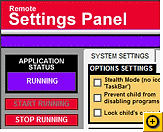Battlefield 3 Wiki
Battlefield 3 (commonly abbreviated to BF3) is a video game by the Swedish developer Digital Illusions aka DICE. Battlefield 3 is published by Electronic Arts and is the fourth full game in the Battlefield series. Players fight in a modern battlefield, using modern weapon systems. Battlefield 3 is a first-person shooter with some strategy and RPG elements. The multiplayer aspect of the game allows players to organize into squads that come under the leadership of a single commander to promote teamwork.

This is UNCONFIRMED: (The DigitalBattle Leak)
Breaking: Battlefield 3 Leaked Info
Posted October 25th, 2009
Details; basic features of BF3 are as listed:
Powered by Frostbite DX
Set in year modern day (just like BF2)
Will ship with 8 maps, each supporting up to 40-players per team
Two playable factions, NATO and MEC (Middle Eastern Coalition)
Same ticket-based game play style as before
Maps are mostly urban, based in Middle East
Squads and Commanders are present, introduced are Battalions which consist of three to four squads.
Five playable classes; Sniper, Assault, Engineer, Medic and Support
Will feature 48 different vehicles (24 for each faction)
Will feature 34 different weapons (17 for each faction) and another 22 unlocks (for both factions), in total 56 different weapons.
Other unlocks include different types of ammunition, body armor, helmets, camouflage and accessories.
Online stats tracking, awards and real world ranks
Soldier feature, looks like MMO-styled characters and avatars
Ranked servers will be available for resellers weeks before the game ships (for testing, apparently, ed.)
In-game replay and recording feature
VoIP, friends list, in-game IM-client and extensive clan support
Built-in auto software updater (no more patches!, ed.)
Widows Vista and OS X
Here’s a list of Battlefield 3 things that are nearly guaranteed:
- PC exclusive
- Frostbite 2 game engine running DX11
- DICE is the producer
- EA is the publisher
- Will feature some sort of destructible environment or the ability to destroy objects (canisters, windows, etc.)
- Won’t be as system resource heavy as previous Battlefield’s (by ratio)
- First Person Shooter
- Released no later than March 2011
A map is mentioned by name, called Baghdad Burning, and appears to be a massive urban map, similar to BF2 very popular Strike at Karkand. The game is powered by Frostbite DX, currently the Frostbite engine is used in Battlefiled: Bad Company on PS3 and Xbox 360. The DX could refer to DirectX (10?), a PC version of the Frostbite engine.
[Update 1] A few wanted to know if the document mentions in-game advertising, it does not, but it wouldn’t be surprising, considering BF2142 had in-game advertising.
[Update 2] EA responded to the rumor with a “no comment” statement.
[Update 3] For clarification, the document doesn’t say that XP is not supported, it only lists Vista and OS X.
[Update 4] Further investigation reveals that EA DICE owns the domain battlefield3.com(not so important, since it was registered in 2004, so was battlefield4.com etc.). Still no reply from DICE. Stay tuned for further updates.
Please note that none of this is confirmed.
Electronic Arts Confirms Battlefield 3 In Development
Electronic Arts COO John Pleasants gave a presentation at the William Blair Growth Stock Conference on June 10, 2009. Pleasants confirmed he’s seen DICE’s work on Battlefield 3.”I’ve had the luxury of looking at Battlefield 3 over at DICE in Sweden and was highly impressed by the way the team is working on that product,” he said. “Of course, that’s not [coming out] in the fiscal year, but that is a product that is looking very good.” Gamers worried that Battlefield: Bad Company, Battlefield Heroes and Battlefield 1943 were a three-pronged answer to fans demanding a third Battlefield don’t have to worry. Battlefield 3 is coming!
Frostbite Engine
Frostbite Engine is a game engine created by EA Digital Illusions CE (DICE), developers of the Battlefield series, for Battlefield: Bad Company, Battlefield 1943, and Battlefield: Bad Company 2. DICE has confirmed a Frostbite 2 engine is being developed that will support DirectX 11 on PC, it is rumored this will be used for Battlefield 3. Battlefield: Bad Company uses the newly developed Frostbite Engine by DICE and Battlefield 3 is rumored to use the frostbite engine as well. The Frostbite Engine is designed for targeting Xbox 360, Playstation 3, and multi-core PCs with DirectX 10.
Some Notable Engine Features:
Long view distance
Very realistic environmental destruction
Very high detail when looked at up close
Easy building destruction
Real-Time Procedural Shading
Texturing Techniques
Large Destruction Landscapes
Destructible Objects (Buildings, Vehicles, Trees, etc.)
Dynamic Skies
Dynamic Lighting
Battlefield 3 is a video game in which you are troops in different world armies. You are given a mission, and in some cases, you will be able to choose which army that you want to fight for. The overall objective of the game is to finish the mission required of you. There is also Battlefield 1 and Battlefield 2
History
Electronic Arts, Inc. (EA) is an international developer, marketer, publisher and  distributor of video games. Founded and incorporated on May 28, 1982 by Trip Hawkins, the company was a pioneer of the early home computer games industry and was notable for promoting the designers and programmers responsible for its games. Originally, EA was a home computing game publisher. In the late 1980s, the company began developing games in-house and supported consoles by the early 1990s. EA later grew via acquisition of several successful developers. By the early 2000s, EA had become one of the world’s largest third-party publishers. In May 2008, the company reported net annual revenue of $4.02 billion in fiscal year 2008. Currently, EA’s most successful products are sports games published under its EA Sports label, games based on popular movie licenses such as Harry Potter and games from long-running franchises like Need for Speed, Medal of Honor, The Sims, Battlefield and the later games in the Burnout and Command & Conquer series. They are also the distributors of the Rock Band series. EA reported a $1.08 billion loss for the financial year ending March 2009. Revenue for the same period was up to $4.2 billion, a 15 percent rise from the previous year’s $3.6 billion
distributor of video games. Founded and incorporated on May 28, 1982 by Trip Hawkins, the company was a pioneer of the early home computer games industry and was notable for promoting the designers and programmers responsible for its games. Originally, EA was a home computing game publisher. In the late 1980s, the company began developing games in-house and supported consoles by the early 1990s. EA later grew via acquisition of several successful developers. By the early 2000s, EA had become one of the world’s largest third-party publishers. In May 2008, the company reported net annual revenue of $4.02 billion in fiscal year 2008. Currently, EA’s most successful products are sports games published under its EA Sports label, games based on popular movie licenses such as Harry Potter and games from long-running franchises like Need for Speed, Medal of Honor, The Sims, Battlefield and the later games in the Burnout and Command & Conquer series. They are also the distributors of the Rock Band series. EA reported a $1.08 billion loss for the financial year ending March 2009. Revenue for the same period was up to $4.2 billion, a 15 percent rise from the previous year’s $3.6 billion
Digital Illusions CE was started by four people: Ulf Mandorff, Olof Gustafsson, Fredrik Liliegren, Andreas Axelsson, members of the former demo group The Silents. All original members came from the small town of Alvesta in Sweden. The Silents’ work is visible in some DICE games. For example, The Silents used the acronym TSL; this acronym is visible in Motorhead on banners and signs. According to the Motorhead manual, TSL is said to stand for “Trans-atlantic Speed League”, a case of a backronym.
For an extended period of time, while the employees were also students at Växjö University, the company’s office consisted of a small dorm room. During those days the company developed popular pinball games for the Amiga computers, such as Pinball Dreams, Pinball Fantasies and Pinball Illusions. The company moved to Gothenburg in 1994 where it was headquartered until 2005, when that office was merged with the ex-Refraction Games office in Stockholm. In 1998 the company was registered on the Swedish stock exchange. Although Codename Eagle received a small cult following, the biggest break for DICE was the release of Battlefield 1942 and its sequels and expansions. The Battlefield series jumpstarted their popularity. In 2004 the total value of the company was estimated at approximately $55 million.
Expansion
In January 2000, the company bought Refraction Games and 90% of Synergenix Interactive. This was followed in March 2001 by the acquisition of Sandbox Studios in London, Ontario, Canada.
EA’s acquisition
In November 2004, Electronic Arts announced their intent to purchase all outstanding shares in Digital Illusions CE at a price of 61 SEK per share, which is approximately 9 US dollars per share. The board of directors of Digital Illusions CE recommended that the company’s shareholders accept the offer. Electronic Arts owned 62 percent of Digital Illusions CE on March 31, 2005.
On October 2, 2006 EA completed the acquisition for 67.50 SEK per share, approximately 10 US dollars per share, for 2.6 million shares, for a total of 175.5 million SEK, approximately 25.85 million US dollars. Digital Illusions CE was renamed EA Digital Illusions CE, and CEO Patrick Söderlund became an EA Studio General Manager. DICE Canada, which at the time was being run by DICE co-founder Fredrik Liljegren, was closed down immediately upon acquisition.
Previous Battlefield Titles
Battlefield 2
Release date(s):
North America June 21, 2005
AUS June 22, 2005
EU June 24, 2005
Developer: Digital Illusions CE
Publisher: EA Games
Series: Battlefield series
Engine: Refractor 2
Version: 1.50 (September 1, 2009)
Platform: Microsoft Windows
Genre: First-person shooter
Mode: Single-player, Multiplayer, Conquest, Co-op Rating(s)
ESRB:Teen
Battlefield 2 is essentially a multiplayer game played via the Internet or a Local area network. A single-player mode with three difficulty levels is included. Both player modes use the same maps and use Battlefield’s conquest game mode. Single-player mode allows 16 computer controlled players, while Internet mode allows up to 64 players. Players can choose to play 3 factions, the United States Marine Corps, the People’s Liberation Army, or the “Middle Eastern Coalition”. Additional factions are playable through the expansion packs, such as the European Union. Progress in the game is made via promotions which allow additional weapons to be unlocked. By playing the game on ranked servers, players are able to add to their global player statistics. These statistics are used to award promotions and other achievements. A console branded version also exists for the Xbox, Xbox 360 and PS2, named Battlefield 2: Modern Combat. Although they both share the same name and setting, they differ considerably in execution, content, and gameplay.
In Battlefield 2, players are divided into two opposing sides (which armies they represent is dependent upon the map). There are two key concepts in Battlefield 2: tickets and control points. Tickets represent an army’s ability to reinforce their position on the battlefield; each team has only a limited supply of tickets, and each casualty on the battlefield reduces the number of available tickets. Control points represent key points on the map, and are represented by flags. Control points are Battlefield 2’s spawn points, and one side possessing a significant majority of the control points puts pressure on the opposing side, resulting in a steady loss of tickets for the pressured side, regardless of casualties. A round ends when one team’s tickets fall to zero, the round’s timer ends, or if at any point a side holds no control points, and has no soldiers alive on the battlefield (meaning the side no longer has any effective presence on the battlefield).
Battlefield 2’s two game modes are Conquest and Cooperative. The only difference between the two modes is that Cooperative includes computer controlled players, whilst Conquest allows only human players. Results from Cooperative mode do not count toward global player statistics.
Review scores
Publication/Score
G4/5 Stars
Game Informer/9.25
GameSpot/9.3
GameSpy/5 Stars
IGN/8.9
Awards
Gamespot Best Multiplayer game of 2005
Maximum PC’s 2006 Multiplayer game of the Year Award
Game Critics Awards Best Online Multiplayer 2005
Battlefield 2 has sales of over 2.25 million copies worldwide, as of July 2006.
Battlefield 1942
Developer: Digital Illusions CE
Publisher: EA Games (Windows), Aspyr Media, Inc. (Mac)
Series: Battlefield series
Engine: Refractor 2
Version: 1.61b (December 2, 2004)
Platform: Windows, Apple Macintosh
Release date
Windows: North America September 10, 2002
EU September 20, 2002
Mac OS: North America June 28, 2004
Genre: First-person shooter Mode(s) Single player, multiplayer Rating(s) ESRB: Teen
Battlefield 1942 generally has a more cooperative focus than previous games of this nature, as it is not only important to kill the opposition but to also hold certain “control points” around the map. Capturing control points allow the team to reinforce themselves by enabling players and vehicles to spawn in the certain area. Consequently, capturing and controlling control points also would reduce enemy reinforcements. Despite these setbacks, Battlefield 1942 was one of the first mainstream games to represent a dramatic shift in FPS game play mentality not only favoring individualism, but simultaneously encouraging teamwork and coordination.
The default game play mode, Conquest, centers on the capture and control of control points; once a team captures a control point, its members can respawn from it. When a team loses control of all their control points, they cannot respawn. And if no one is alive, the team with no “spawn” points loses. Games are composed of rounds. A team wins the round when the other team runs out of tickets. A team loses tickets when its members are killed, but also when the other team holds a majority of the capture points on a map. Therefore, sometimes the winning team must hunt down straggling or hiding enemy forces at the end of a round. Spawn tickets also play a vital role in the success of both teams. Every time a player on a team dies and respawns, his team loses one ticket. Every team starts each round with between 150 and 300 tickets, depending on the team’s role (e.g., defense). Teams also gradually lose tickets depending on how many spawn points they control. As a general rule, the fewer spawn points controlled by a team, the more tickets they lose. For a team of 32 on a 64 player map, with 150 tickets, this means a little less than 5 respawns or deaths on average for every player if they hold their starting spawn points.
Milestone
July 19, 2002 – Battlefield 1942 single-player demo released (Tobruk map)
August 16, 2002 – Battlefield 1942 multiplayer demo released (Wake Island map)
September 10, 2002 – Battlefield 1942 released
2003 – 6th annual Interactive Achievement Awards, BF1942 receives awards for:
Online Gameplay
Innovation in PC Gaming
PC Game of the Year
Game of the Year
February 2, 2003 – Road to Rome released
August 8, 2003 – Battlefield 1942 Secret Weapons demo released (Hellendorn map)
September 4, 2003 – Secret Weapons released
October 10, 2003 – 2 million copies sold
March 15, 2004 – 3 million copies sold, BF1942’s sequel, Battlefield Vietnam released
June 28, 2004 – Aspyr begins shipping the Macintosh Version of Battlefield 1942
This WIKI Page is located here: Battlefield 3





